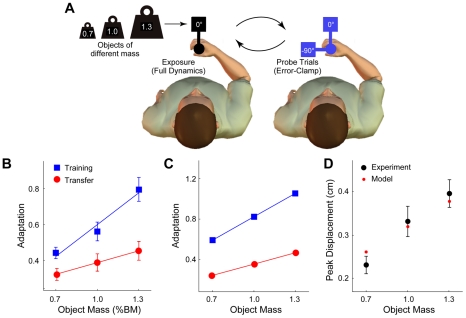Figure 4. Adaptation to objects of increasing mass (Experiment 3), experimental results and model predictions.
A Subjects (n = 8) were exposed to an object with 3 different masses in blocks of 90 trials. They first experienced the object at the training orientation (60 trials at 0°; left panel) and were then presented with random error-clamp trials (right panel) at the training orientation (3 error-clamp trials at 0°) or a novel transfer orientation (3 error-clamp trials at −90°). The 6 error-clamp trials were randomly inserted into a block of 30 exposure trials (1 every 5 trials). Subjects experienced the 3 masses in a pseudo-random order. B Adaptation in the experiment as a function of increasing object mass for training (blue squares) and transfer (red circles) orientations of the object (means and standard errors across subjects). Adaptation was measured using error-clamp trials and is expressed relative to the 1.0% BM object (see main text). The lines show the mean of the individual linear fits to each subject for the training (blue) and transfer (red) orientations. C Adaptation in the model as a function of the object mass, plotted as in panel B. The model simulation is for the MCSRM4 with the best-fit parameters from Experiment 2. D Final peak displacement from the experimental data (black points show means and standard errors across subjects) and predictions from the model (red points). The model correctly predicted that subjects would tolerate larger errors for objects of larger mass.

